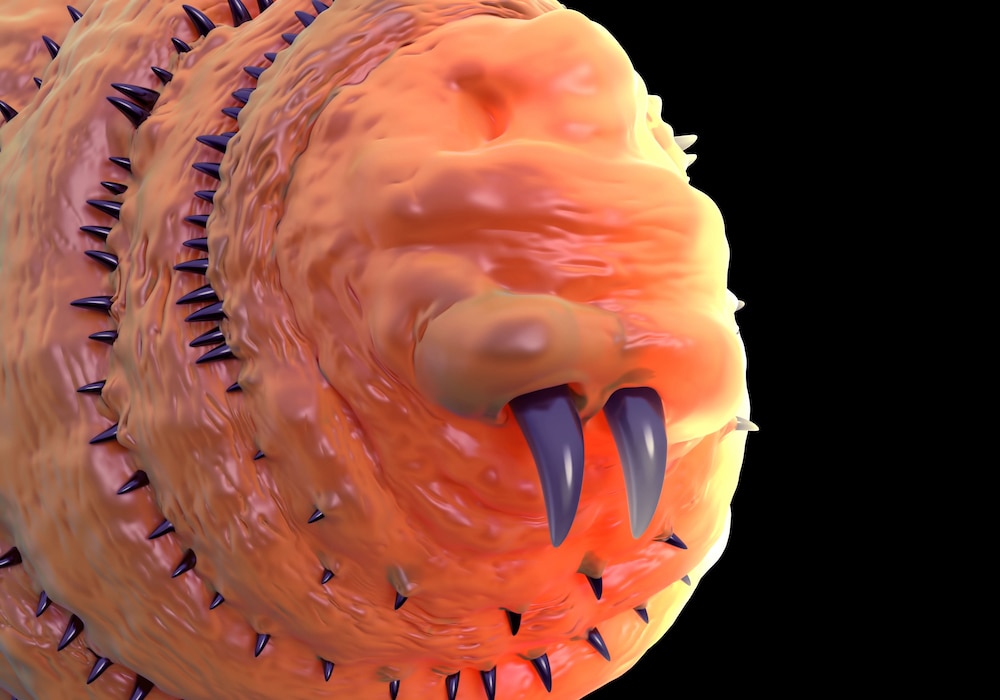Create a free profile to get unlimited access to exclusive videos, sweepstakes, and more!
Got The Thing in your eye? What looked like pinkeye was actually a maggot infestation
This almost makes horror movies sound comforting.

Look in the mirror. Look closer. Is that pinkeye, or is something writhing around in there?
Parasites have inspired some of the scariest cinematic monsters for a reason. There is tremendous shock value in something that feeds off or merges with a host. Some, like the Lovecraftian creature in The Thing, take over their prey’s entire body and eat the victim from the inside, but others might just be content with an eyeball. That is what one unfortunate gardener in France found out when he ended up in the E.R. with an itch he couldn’t scratch.
When Doctors at the University Hospital of Saint-Etienne took a closer look, they discovered that it wasn’t the pinkeye, or conjunctivitis, that it appeared to be. This was an infestation of bot fly larvae.
“More than a dozen mobile, translucent larvae were observed on the cornea, bulbar conjunctiva, and upper and lower conjunctival fornices,” the investigating doctors said in a study recently published in Images in Clinical Medicine.
You might be familiar with bot flies if you’re into true crime and forensic science. Some species lay their eggs on decaying flesh, and coroners’ investigations of insect activity often include evidence of bot fly larvae. The sheep bot fly, Oestrus ovis, craves the animal it was named for. These creepy crawlies will lay eggs in the nostrils of sheep, and the larvae that hatch will then worm their way into the sinuses, where they thrive off the mucus and turn into bona fide maggots. They will then relieve the sheep of what must feel like a nasty sinus infection and drop to the ground.
The maggots morph into flies, and the cycle keeps repeating itself like a recurring nightmare. Flies buzz around, mate and lay eggs, as one apparently did when the 53-year-old man who only thought he had conjunctivitis could have sworn that something actually entered his right eye. It had to have been a female fly looking to touch down somewhere so she could unleash her brood. The doctors determined a fly had landed there long enough to deposit larvae. Sometimes, nauseating as it may sound, these flies get confused and mistake human eyes for sheep nostrils. The itch that followed forced the man to hightail it to the ER after a few hours.
He had the right idea, because when his eye was examined, there were no scratches from the body spikes and fangs of bot fly larvae and maggots like the one above — yet. They hadn’t yet managed to really dig into the tissue of the cornea and other areas where they were found. Female bot flies are larviparous, meaning they don’t lay eggs but drop freshly hatched maggots into the nose of a sheep. While infestations of sheep bot fly larvae in human eyes aren’t unheard of, you won’t get these things in your eye if you happen to be too close to an animal crawling with them. Maggots of this species prefer the tissues and fluids of sheep.
“Because the larvae were numerous and can cause superficial corneal abrasions with their cephalic oral hooks and body spicules, the patient was treated with prophylactic topical antibiotic agents,” the doctors said in their study.
Besides the enlarged blood vessels in his eye, the man escaped just about unscathed. No larvae had made it to his lens or retina. The larvae were removed with forceps, and after 10 days, there was no sign of irritation or infection. Unfortunately for your nightmares, there is a human bot fly, Dermatobium hominis, so it really is possible to get maggots under your skin. Sweet dreams.


























